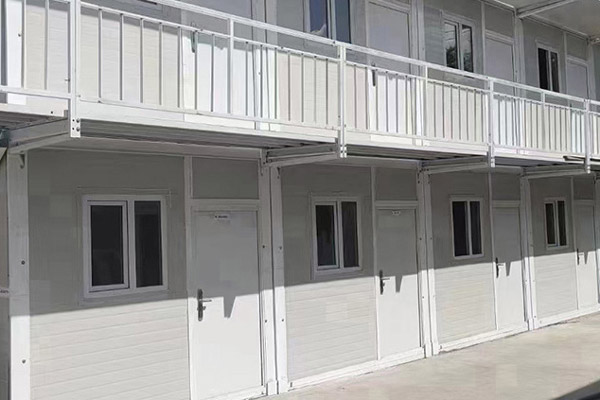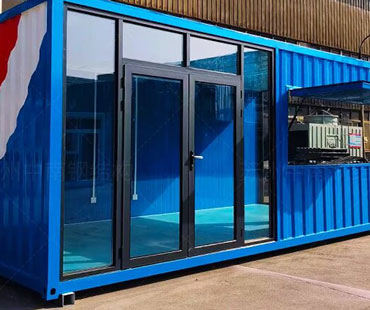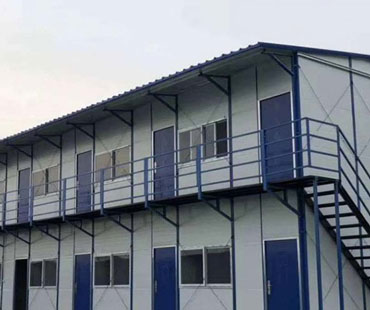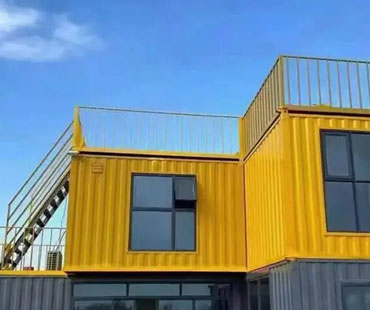In recent years, the world has witnessed a growing demand for sustainable housing solutions driven by environmental concerns, urbanization, and a desire for affordable living spaces. Among the innovative responses to these challenges, container homes have emerged as a compelling option for eco-friendly living. These homes, constructed from repurposed shipping containers, not only provide a practical housing solution but also embody the principles of sustainability, creativity, and efficiency.
Container homes are structures built using used shipping containers, which are typically made of durable steel. Originally designed for transporting goods across oceans, these containers are now being creatively repurposed into livable spaces. The idea is rooted in the desire to minimize waste and utilize existing materials, aligning perfectly with the principles of sustainable living.
Environmental Benefits
1.Recycling and Waste Reduction: One of the most significant benefits of container homes is their role in recycling. By repurposing old shipping containers, builders can help reduce the amount of industrial waste that ends up in landfills. This approach not only mitigates the environmental impact of construction but also contributes to a circular economy where materials are reused rather than discarded.
2.Energy Efficiency: Container homes can be designed to be highly energy-efficient. Their compact size and sturdy construction mean they require less energy for heating and cooling compared to traditional homes. Many container homes incorporate passive solar design, using natural light and ventilation to reduce energy consumption. Additionally, homeowners can install solar panels and energy-efficient appliances to further decrease their carbon footprint.
3.Minimal Land Use: Container homes often have a smaller footprint than conventional houses, making them suitable for urban environments where space is at a premium. This efficient use of land can help mitigate urban sprawl, preserving natural habitats and reducing the environmental impact associated with construction.

With rising housing costs in many urban areas, container homes present an attractive alternative for those seeking affordable living solutions. The cost of constructing a container home is generally lower than that of traditional houses, especially when considering the price of land and the potential for DIY construction. This affordability makes container homes an appealing option for a wide range of individuals, including young professionals, families, and retirees.
Moreover, container homes can be built quickly, allowing for faster occupancy. This is particularly beneficial in areas facing housing shortages or natural disasters, where rapid deployment of housing solutions is critical.
Container homes offer remarkable design flexibility. Architects and builders can combine multiple containers, stack them, or even modify their shapes to create unique living spaces that reflect the homeowner's style and needs. The industrial aesthetic of shipping containers is appealing to many, and the exterior can be customized with paint, insulation, and other materials to enhance both appearance and functionality.
Additionally, container homes can be designed to include green spaces, such as rooftop gardens or outdoor patios, which contribute to the overall sustainability and livability of the home. This blend of functionality and aesthetics makes container homes not just practical, but also visually appealing.
The rise of container homes also has broader social implications. Housing developments based on container construction can foster community living by creating clusters of homes that encourage interaction among residents. These developments can be designed with shared spaces, such as gardens and communal areas, promoting a sense of community and belonging.
Furthermore, container homes can provide solutions for marginalized populations, including the homeless or those displaced by natural disasters. Innovative projects have emerged worldwide that focus on utilizing container homes to address urgent housing needs, showcasing the potential for positive social impact.
As the world continues to grapple with environmental challenges and housing crises, container homes stand out as a viable and sustainable housing solution. Their ability to reduce waste, promote energy efficiency, and provide affordable living options positions them as a key player in the future of eco-friendly living. With ongoing innovations in design and construction, the rise of container homes is not just about building houses; it is about building a more sustainable and inclusive future for all. As we embrace these solutions, we take a significant step toward a greener planet and a more equitable society.


